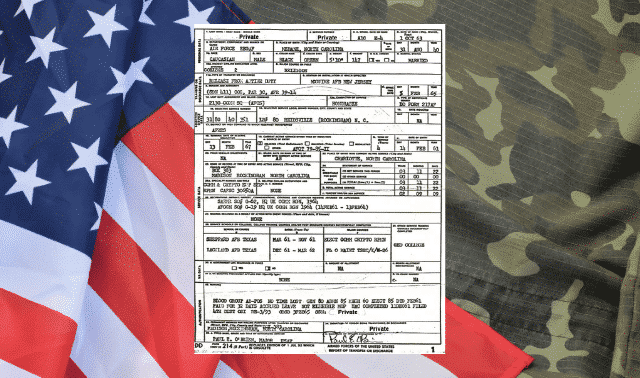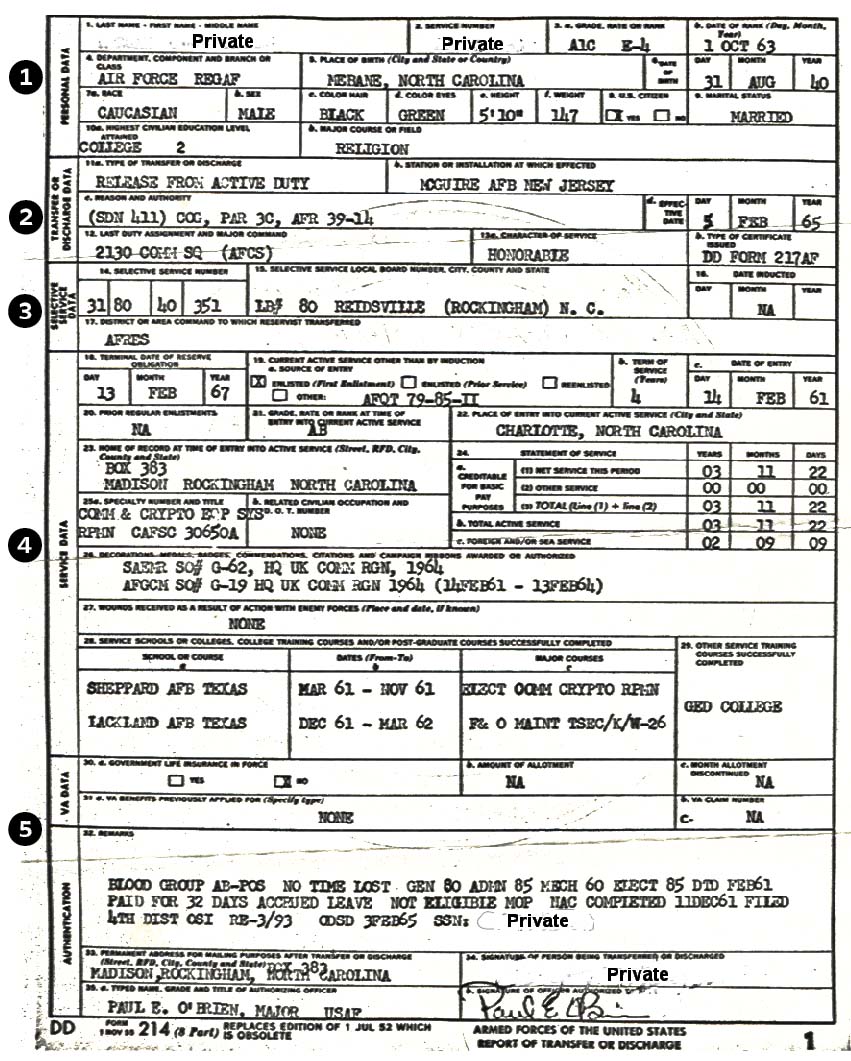
Beginning in 1950, the Department of Defense issued DD-214 forms, also called Certificates of Release or Discharge from Active Duty. As the document’s longer name implies, each service member received a DD-214 upon his or her discharge from the United States Armed Forces. The form includes a verified record of the service member’s active and reserve duty, making it a valuable genealogical record. The Department of Veterans Affairs and employers used the document as proof of military service for veteran benefits and employment purposes, respectively.
The form replaced the WD AGO Forms and NAVPERS (Naval Personnel) discharge documents. (Those who served in the Army National Guard or Air National Guard received separate documentation.) A fire in 1973 at a National Archives center in St. Louis destroyed most Army and Air Force personnel records from the mid-20th century—making DD-214 forms critical in documenting military service.
Below is a DD-214 form from 1963, with annotations that will help you understand information in each column. Note that the person’s name has been redacted for privacy.

1. Personal Data
Details listed in DD-214 forms include the individual’s full name, service number, rank at discharge, place and date of birth, race, gender and marital status. The document also contains a physical description of the person and some background information about his or her education. Each piece of data can point you to additional records.
Genealogist’s Military Records Field Manual eBook
Trace your military ancestors! This eBook contains great strategies for finding your ancestors who served in the military, including how to research Civil War ancestors, find military service records and interpret draft registration cards.
2. Transfer or Discharge Data
Here, you’ll find information on why the government issued this form. For example, the class of discharge or separation indicates the circumstances surrounding the person’s discharge: Honorable, General, Bad Conduct (i.e., court-martial) or Dishonorable (for an offense such as rape or murder). Note that those Honorably Discharged or receiving a General discharge typically transferred to that service branch’s reserves. The DD Form 217AF indicates the person is being discharged from the Air Force.
3. Selective Service Data
Look for the individual’s Selective Service Number (which the government used for draft purposes), along with where the individual registered. No date of induction indicates voluntary enlistment.
4. Service Data
This expansive section includes the date and location for entry into service, termination date for reserve duty and home address. You’ll also find the individual’s operative specialty(ies), service statement dates (including any foreign service time), and any decorations/awards or wounds received. You’ll also see any schools, colleges or training.
5. VA Data and Authentication
Here, you’ll find any information concerning life insurance allotment, plus final details for the discharge or separation.
A version of this portion of the article appeared in the December 2019 issue of Family Tree Magazine.
No comments:
Post a Comment